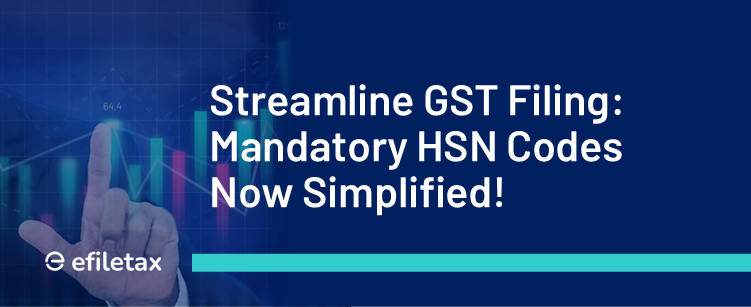
Implementation of Mandatory HSN Codes in GSTR-1 & GSTR-1A: A Detailed Guide
In its continuous effort to streamline GST compliance, the Goods and Services Tax Network (GSTN) has announced the Phase-III implementation of mandatory mentioning of HSN (Harmonized System of Nomenclature) codes in GSTR-1 and GSTR-1A. Effective from the return period of February 2025, this move is set to enhance reporting accuracy and reduce errors in tax filings.
Key Highlights of Phase-III Implementation
- HSN Code Selection Made Simpler
Previously, taxpayers manually entered HSN codes while filing returns. Now, GSTN introduces a dropdown feature for selecting the correct HSN code. This eliminates manual errors and ensures uniformity across filings. - Table 12 Bifurcation
To simplify reporting, Table 12 in GSTR-1 and 1A has been bifurcated into two tabs:- B2B Supplies: For business-to-business transactions
- B2C Supplies: For business-to-consumer transactions
- Validation Mechanism for Accurate Reporting
- A validation feature has been introduced to check the values of supplies and corresponding tax amounts for both B2B and B2C tabs.
- Initially, these validations will be in warning mode, meaning that failing the validation will not block the filing process. This provides taxpayers with a learning curve to adapt to the changes.
Why HSN Codes Are Crucial in GST Compliance
HSN codes serve as a global standard for classifying goods and services, ensuring consistency in taxation. Mandating the correct HSN code in GST filings helps:
- Streamline tax administration
- Prevent classification disputes
- Avoid mismatches in input tax credit (ITC) claims
Relevant Case Law: Importance of Accurate Reporting
In the case of M/S Rajdeep and Company vs. Commissioner of Central Tax, the taxpayer faced a penalty due to incorrect HSN classification. The judgment highlighted the significance of accurate HSN codes in avoiding legal disputes and penalties.
The implementation of the dropdown feature in Phase-III directly addresses such issues by guiding taxpayers to select the correct HSN codes, thereby reducing misclassification risks.
Advantages of Phase-III for Taxpayers
- Reduced Errors: Automatic HSN selection minimizes manual mistakes.
- Enhanced Transparency: Segregation of B2B and B2C supplies ensures better data accuracy.
- Improved Compliance: Warning mode validations provide a transition period for businesses to adapt.
- Efficiency in Audits: Correct HSN codes simplify scrutiny by tax authorities, ensuring faster resolutions.
Step-by-Step Guide for Filing GSTR-1 with HSN Dropdown
- Log in to the GST portal and navigate to GSTR-1.
- Select the return period starting February 2025 or later.
- In Table 12, choose the correct HSN code from the dropdown menu.
- Enter the transaction details under the bifurcated tabs for B2B and B2C supplies.
- Validate the data. Note any warning messages but proceed with the filing as validations are not blocking initially.
- Submit and file the return.
Looking Ahead: What Taxpayers Should Do
- Prepare for Compliance: Ensure your accounting systems are updated to align with the new dropdown feature.
- Train Your Team: Educate your finance and compliance teams about the changes in Table 12 reporting.
- Monitor Updates: Stay informed about further phases and changes in GST compliance.
Conclusion
The mandatory mentioning of HSN codes in GSTR-1 and GSTR-1A is a step towards enhanced compliance, accuracy, and transparency in GST filings. By introducing automated dropdowns, bifurcated reporting, and validations, GSTN aims to make the process more efficient for taxpayers. As businesses adapt to these changes, they can look forward to fewer disputes and smoother tax administration.